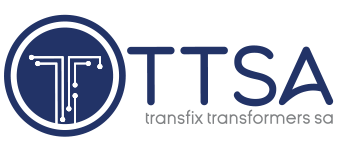Licensed electricity trader Discovery Green has signed a 10-year power purchase agreement with Southern Sun, under which more than 90% of the hospitality group’s consumption across seven flagship sites will be met from wheeled renewable energy. Southern Sun’s Arabella Hotel, Golf and Spa, Drakensberg Sun, Garden Court Morningside, Southern Sun Katherine Street, Southern Sun Sandton, Champagne Sports Resort, and Sabi River Sun Resort will be supplied from Discovery Green’s renewable portfolio, including Phase 2 of Red Rocket’s Overberg Wind Farm, which is currently under construction.
Independent power producer (IPP) and licensed trader Envusa Energy reports that its 520 MW Koruson 2 project cluster is nearing commercial operation – a milestone that Envusa says will position it to support large Southern African companies striving for carbon neutrality, including those in hard-to-abate sectors. The 50/50 JV between EDF Renewables and Anglo American is building a 240 MW solar PV facility and two 140 MW wind projects in the Eastern and Northern Cape provinces.
The National Energy Regulator of South Africa (Nersa) has extended the deadline for nominations for members of its newly established Section 5 advisory forum, as approved in accordance with the Electricity Regulation Act.
The advisory forum members will provide inputs to Nersa on various matters related to the creation of a competitive electricity market.
Forestry, Fisheries and the Environment Minister Dr Dion George has approved the publication of the draft ‘National Greenhouse Gas Carbon Budget and Mitigation Plan Regulations’ for public comment. The regulations, alongside the accompanying declaration of the list of greenhouse gases and activities and associated technical guidelines, will be published in early August.
President Cyril Ramaphosa has offered an optimistic assessment of the economic reforms being undertaken in South Africa’s electricity and freight logistics sectors, amid growing concern about the pace of progress with regard to opening the country’s railways and ports to competition and signs of potential stalling in the electricity sector. In his weekly letter, Ramaphosa highlighted the release of the latest progress report on Operation Vulindlela, the scope of which was recently widened by the Government of National Unity to include municipal recovery, digital services and spatial equality components.
State-owned utility Eskom has been ordered by a high court to pay more than R1-billion to French nuclear energy company Framatome, after contract and project management problems delayed a steam generator swap at the entity’s Koeberg nuclear power plant, newspaper Business Day reports. In an article on July 21, reporter Kabelo Khumalo reports that the adjudication process, which was handled by advocate Peter Ramsden, resulted in the court ordering Eskom to pay Framatome €35.2-million (R727-million) and a further R256.6-million, in line with Ramsden’s earlier findings.
Mozambique won World Bank backing for its plan to build Southern Africa’s biggest hydropower plant in half a century. The lender plans to provide debt and equity funding as well as risk guarantees and insurance for the $5-billion Mphanda Nkuwa plant on the Zambezi river and an associated $1.4-billion power transmission project, World Bank President Ajay Banga said in an interview in Mozambique.
The solar industry experienced a boom between 2020 and 2023 when loadshedding was rife; however, the rush to install solar panels left monitoring and maximising these power systems as an afterthought, says solar technology specialist SolrBoost cofounder Paul de Goede.
He explains that 80% of solar systems in residential and small commercial and industrial operations are monitored reactively, instead of proactively with the use of analytics, which leads to lower returns on investment (ROI) for these assets.
Licensed electricity trader Apollo Africa is ramping up its market entry with a balanced, scalable growth strategy that leverages its position as a trusted intermediary between South Africa’s top-tier independent power producers (IPPs) and a growing portfolio of industrial and commercial customers. Newly appointed interim CEO Ed Cameron reports that Apollo’s role unlocks reliable renewable energy supply for South African businesses through wheeling, while helping both IPPs and customers manage risk.
Lower-cost, free-maintenance, zero-investment rooftop solar electricity is the enticing five-year power purchase agreement (PPA) offer from Sosimple Energy – a diligent entrepreneurial company which already owns and operates more than 75 of solar PV assets across South Africa’s industrial and commercial sectors, and which is targeting five times more. “The customer carries no risk or expense beyond paying for the power they consume. We recover our investment over the term of the agreement,” Sosimple Energy MD Liana Braxton outlines in the attached video interview with Engineering News & Mining Weekly Publishing Editor Martin Creamer.
INDUSTRY NEWS
- Energy jobs rise but labour shortages threaten future projects – IEADecember 5, 2025 - 3:05 pm
- New battery manufacturing body wants local content designated in large industrial and …December 5, 2025 - 11:04 am
- Opinion: The African grid of the future – smart, connected, resilientDecember 5, 2025 - 11:04 am
WHERE TO FIND US
Address
9 Yellow Street
Botshabelo Industrial Area
Botshabelo, Free State
Call / Email Us
Tel: +27 (0) 61 956 6772
Email: info@transfix.co.za
